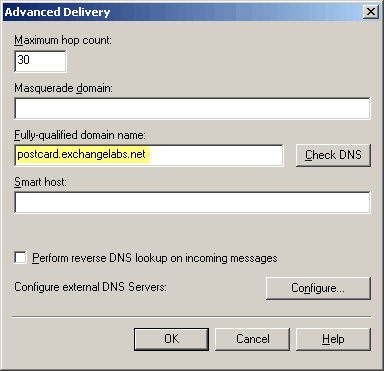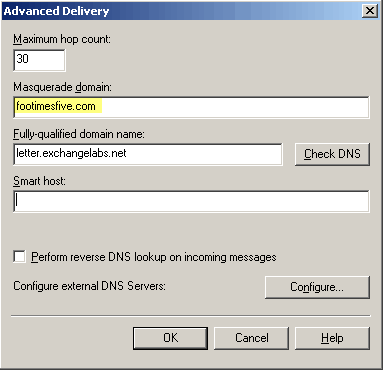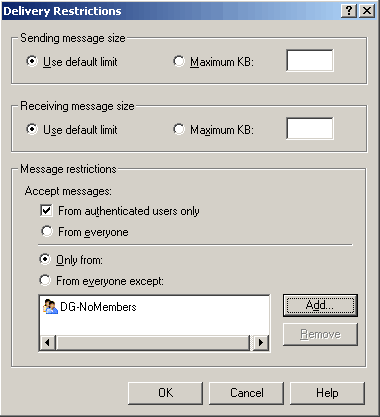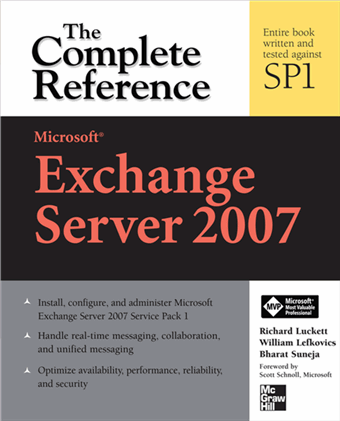The instructions in
Exchange Server 2007: Bulk creation of mailboxes using Exchange Management Shell allow you to quickly create mailboxes in bulk using the
New-Mailbox command.
Continuing from where we left off in that post, another scenario is being able to add Active Directory attributes to the new user object created by New-Mailbox. Note,
the New-Mailbox command can populate only a limited set of AD attributes for an object - those related to Exchange. These are listed in the documentation for
New-Mailbox.
To add AD attributes, the logical choice would be to use the
New-User command to create the user, and mailbox-enable it by using
Enable-Mailbox. This would work great, except for the fact that the
New-User command doesn't exist! The key thing to remember is -
Exchange provides only the commands necessary to create Exchange recipients. So you have commands like
New-Mailbox,
New-MailUser,
New-MailContact,
New-PublicFolder/New-MailPublicFolder, and
New-DistributionGroup. However, there are no AD-equivalents like New-User, New-Contact (to create a Contact that's not mail-enabled), New-SecurityGroup or New-Group.
PowerShell and Active Directory
Active Directory isn't really PowerShell-enabled, as other components of Windows - like the file system, registry, etc., and Exchange Server 2007 are. There are no AD-related commands (Cmdlet? Shell folks, was it really necessary to introduce another word to the jargon - one that uses the entire word "command"? Perhaps something shorter would've been nicer if you wanted to have a unique word... :-) You can use the Directory Services provider, but that essentially leaves you in VBScript mode, with some PowerShell goodness! A little easier, but not natively shell, as you are used to with Exchange commands.
Quest adds these much-needed commands through its free add-on Management Shell for AD. Download it here. Quest has named them so they're differentiated from future commands that will be available natively in PowerShell. For the time being, the quirkiness of typing commands with a Q - as in New-QADUser instead of New-ADUser or New-User - is something we will have to live with, until AD is PowerShell-enabled.
Kudos to the folks at Quest for making these available for free.
Also take a look at PowerShell Community Extensions - it has an Active Directory provider that lets you navigate AD like a file system.
If you already have a user created, you can use the
Set-User command to populate its AD-related attributes.
To accomplish what we want to do here
(thanks to Evan Dodds for the input), we
use the New-Mailbox command, and pipe the output to Set-User to populate AD attributes. In the following example, we add the Phone attribute, besides using the Alias, Name and UserPrincipalName attributes used to create the mailbox.
Add the Phone column in our CSV/spreadsheet, so it looks like the following:
Alias,Name,UPN,Phone
User_One,User One,[email protected],650.555.1121
User_Two,User Two,[email protected],650.656,2221
User_Three,User Three,[email protected],650.797.3321
Now we modify the script/commands from the previous post:
$password=Read-Host "Enter Password" -AsSecureString
Import-CSV "c:\CreateRecipients.csv" foreach {new-mailbox -alias $_.alias -name $_.name -UserPrincipalName $_.UPN -database "Mailbox Database" -org "Users" -Password $password | set-user -phone $_.phone}
The above command(s) create the user account as part of New-Mailbox. When we pipe that to Set-User, we still have a reference to that object, and can use Set-User to populate the AD attribute Phone.
(Changes made to the command from previous post highlighted.)Related Posts:-
Exchange Server 2007: Bulk creation of mailboxes using Exchange Management Shell-
Exchange Server 2007: Bulk mailbox-enabling users using Exchange ShellLabels: AD/LDAP, Administration, Exchange Server 2007, Exchange Shell, Mailbox, Scripts

 Exchangepedia Blog is read by visitors from all 50 US States and 150 countries world-wide
Exchangepedia Blog is read by visitors from all 50 US States and 150 countries world-wide





 The exciting news - standing here during the attendee party at TechEd 2006, I couldn't have thought of this possibility. Yes! The
The exciting news - standing here during the attendee party at TechEd 2006, I couldn't have thought of this possibility. Yes! The 



